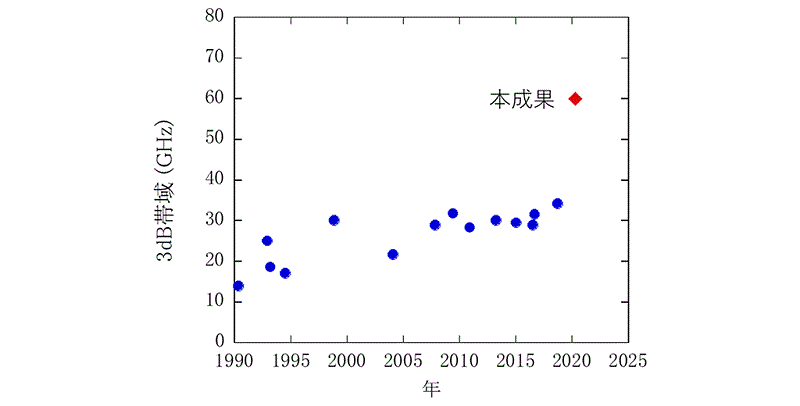
Figure 1: Transition of the 3 dB band of a directly modulated laser (without the use of additional speed-up techniques)
NTT: Developed 100GHz band, direct modulation laser: SiC, membrane laser
-Realized with low power consumption by membrane laser on SiC substrate-
2020/10/20
NTT
Tokyo Institute of Technology
Future Industrial Technology Research Institute
On a SiC substrate with high thermal conductivity
Indium phosphide compound semiconductor was used
We have developed a membrane laser.
As a direct modulation laser, the 3dB band (* 4) has exceeded 100GHz.
It was confirmed that “a signal of 256 gigabits (256 billion bits) per second can be transmitted for 2 km”.
Directly modulated laser:
Conventional problems:
Directly modulated lasers are now widely used in data centers.
However, there is a limit to the modulation speed, which has been a problem.
This solution:
If you use SiC / membrane laser,
For future traffic increase
Supports low cost and low power consumption
It can be applied to the large-capacity optical transmission board under NTT’s IOWN (*) concept.
Publish the results:
This achievement will be published in the online bulletin version of the British scientific journal “Nature Photonics” on October 19, UK time.
Nihon Keizai Shimbun
https://www.nikkei.com/article/DGXLRSP542014_Q0A021C2000000/
World’s fastest directly modulated laser exceeding 100-GHz bandwidth
October 20, 2020
World’s fastest directly modulated laser exceeding 100-GHz bandwidth
~Membrane laser on silicon carbide substrate achieves low power consumption
NTT Corporation
Tokyo Institute of Technology
Future Research of Science and Tech,has developed a membrane laser*1 that uses an indium-phosphorus compound semiconductor*2 on a silicon carbide substrate*3 with high thermal conductivity.
This laser,
the world’s first directly modulated laser with a 3-dB bandwidth*4 exceeding 100 GHz, can transmit at 256 gigabits (256 billion bits) per second over a distance of 2 km.
Directly modulated lasers
are now widely used in data centers*5, but their modulation speed is limited, which has been a problem for further increasing in transmission capacity.These results will enable us to respond to
the expected increase in traffic
with a low-cost and
low-power-consumption solution
will contribute to the realization of a high-capacity optical transmission infrastructure that supports NTT’s IOWN*6 concept.
This research
was reported in Nature Photonics on October 19, 2020. NTTPress Releases : NTT HOME
https://www.ntt.co.jp/news2020/2010e/201020a.html
Directly modulated membrane lasers with 108 GHz bandwidth on a high-thermal-conductivity silicon carbide substrate
Abstract
Increasing the modulation speed of semiconductor lasers
has attracted much attention from the viewpoint of both physics and the applications of lasers.
Here we propose a membrane distributed reflector laser on a low-refractive-index and high-thermal-conductivity silicon carbide substrate that overcomes the modulation bandwidth limit.
The laser features a high modulation efficiency because of its large optical confinement in the active region and small differential gain reduction at a high injection current density.
We achieve a 42 GHz relaxation oscillation frequency by using a laser with a 50-μm-long active region.
The cavity, designed to have a short photon lifetime,
suppresses the damping effect while keeping the threshold carrier density low, resulting in a 60 GHz intrinsic 3 dB bandwidth (f3dB).
By employing the photon–photon resonance at 95 GHz due to optical feedback from an integrated output waveguide,
we achieve an f3dB of 108 GHz and demonstrate 256 Gbit s−1 four-level pulse-amplitude modulations with a 475 fJ bit−1 energy cost of the direct-current electrical input.
Nature Photonics